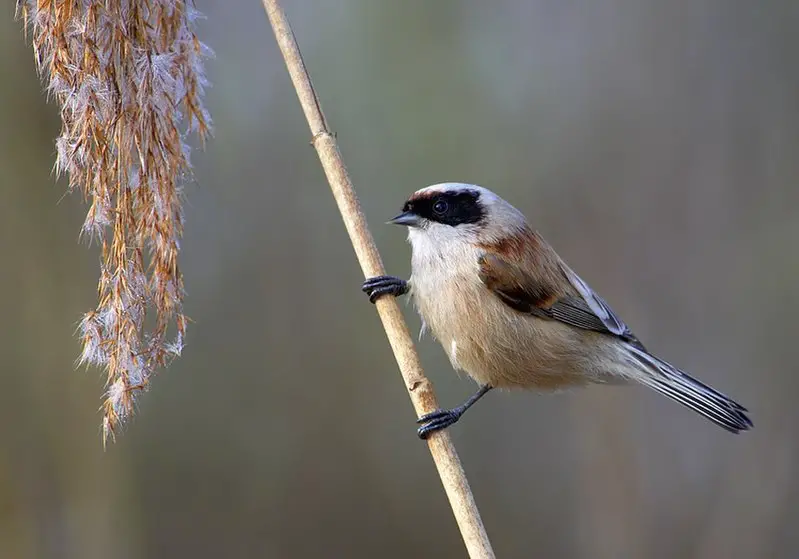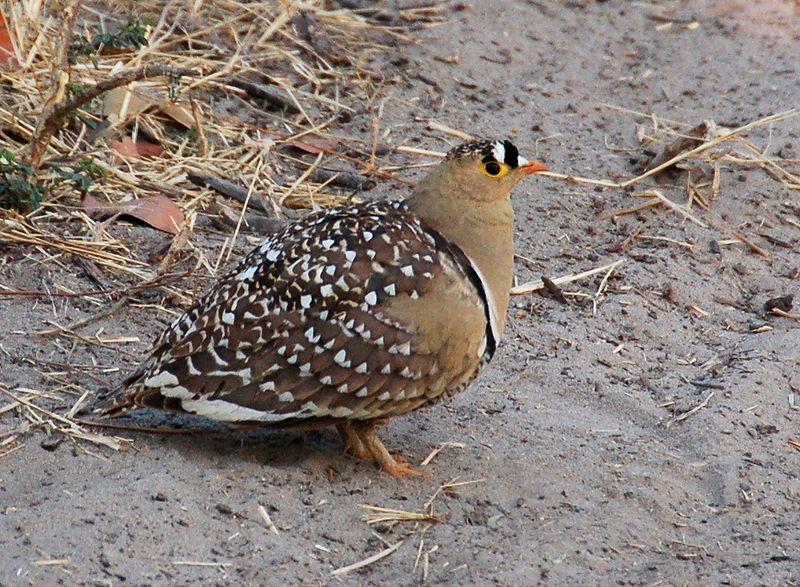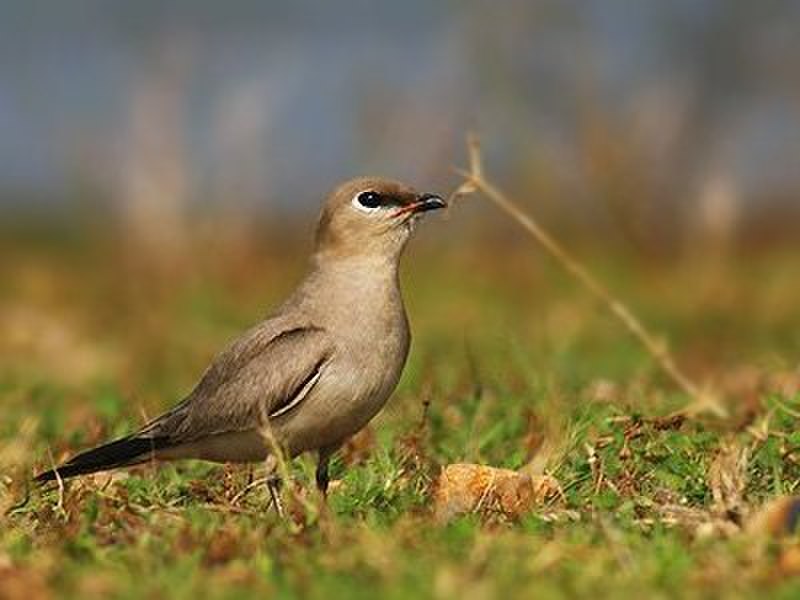Bosnia and Herzegovina is home to a diverse population of birds. From the majestic golden eagle to the colorful European bee-eater, the country provides a home to a variety of species.
The varied terrain of Bosnia and Herzegovina, from mountains to wetlands, makes it an ideal habitat for many different birds. With its wide variety of habitat types, Bosnia and Herzegovina is also a great place for bird watchers to explore and observe.
In this article, we will explore some of the most interesting birds that can be found in Bosnia and Herzegovina.
1. Eurasian Penduline Tit

The Eurasian penduline tit is a passerine bird of the genus Remiz which can be found widely across the western Palearctic.
It migrates to more northern parts in summer, while staying resident in its southern range during winter months.
This species experienced an expansion of its breeding grounds throughout Western Europe between 1980s and 1990s, thus increasing its population significantly.
The Penduline Tit has various striking features like bright yellow underparts with black streaks on sides.
Greyish-brown upper part with white underside and pale eye line along head sides as well as distinctive tail nest made from fibers and mosses hanging from trees or shrubs like a pendulum hence their name ‘Penduline’.
These birds feed mainly on insects but also eat some seeds especially sunflower seeds making them popular garden visitors for many people.Scientific classification:
| Kingdom | Animalia |
| Phylum | Chordata |
| Class | Aves |
| Order | Passeriformes |
| Family | Remizidae |
| Genus | Remiz |
| Species | R. pendulinus |
2. Sylviid Warblers

The Sylviid warblers are a family of passerine birds found in Eurasia and Africa. They include the typical warblers as well as babblers that were formerly part of the Old World babbler family.
These birds have slender bodies, pointed wings, long tails and strong legs adapted for ground-dwelling habits like running or hopping along branches.
The male often has bright colors while females are usually duller in coloration with more muted plumage patterns than males.
Some species also show sexual dimorphism where one sex may be larger or smaller than its counterpart; for instance some species may have longer tail feathers on the female side compared to their male counterparts.
Many members of this group feed on insects but some specialize on seeds, fruits, nectar or even frogs.Scientific classification:
| Kingdom | Animalia |
| Phylum | Chordata |
| Class | Aves |
| Order | Passeriformes |
| Superfamily | Sylvioidea |
| Family | Sylviidae Leach, 1820 |
3. Waxwing Birds
Waxwings are small, colorful birds found throughout North America and Eurasia.
They have a glossy black crest on their heads, gray wings with white spots, a reddish tail tip and distinctive yellow stripes on the sides of their faces.
Waxwings feed mainly on fruit but also eat insects during breeding season to get protein for nesting chicks.
They tend to flock together in large groups when food is plentiful.
During winter months they can often be seen feeding near birdfeeders or searching for berries in gardens and parks across much of Europe and Asia as well as northern parts of North America like Canada or Alaska.
Their friendly behavior makes them popular watching among birdwatchers.
4. Motacillidae

Motacillidae is a family of small passerine birds consisting of around 70 species. They are found across Europe, Africa, Asia and even Alaska with two migratory breeding species.
The three genera they belong to include wagtails which typically have medium to long tails; longclaws that can only be spotted in the Afrotropics; and pipits which possess the most cosmopolitan distribution worldwide.
These birds feed on insects as well as seeds for their diets and are usually seen in open habitats such grasslands or wetlands where food sources like invertebrates can easily be accessed.
Most Motacillidae species also use mud nests during breeding season making them easy targets for predators so it’s important we protect these beautiful creatures.Scientific classification:
| Kingdom | Animalia |
| Phylum | Chordata |
| Class | Aves |
| Order | Passeriformes |
| Superfamily | Passeroidea |
| Family | Motacillidae Horsfield, 1821 |
5. Treecreepers

Treecreepers are small passerine birds found in wooded areas of the Northern Hemisphere and sub-Saharan Africa.
They have dull colored plumage, long curved bills, stiff tails and strong feet that help them to climb up tree trunks while searching for food such as insects and spiders.
The two genera Certhia and Salpornis include eleven species which can be identified by their distinct call – a high pitched ‘tsee-tsit’.
Treecreepers build cup shaped nests on trees usually near the base or middle trunk using mosses, lichens, grasses with leaves inside them to provide insulation from cold temperatures.
These birds also use bark crevices during winter months when they shelter in groups together against extreme weather conditions.Scientific classification:
| Kingdom | Animalia |
| Phylum | Chordata |
| Class | Aves |
| Order | Passeriformes |
| Superfamily | Certhioidea |
| Family | Certhiidae Leach, 1820 |
6. Sandgrouse

Sandgrouse is birds of the order Pterocliformes, found mainly in Africa and Asia. There are sixteen species belonging to two genera – Syrrhaptes from central Asia and Pterocles from Africa and other Asian countries.
They inhabit treeless areas such as deserts, steppes, scrubland, or savannas and tend to be ground-dwelling birds that feed on seeds.
Sandgrouse has adapted special features for survival in their harsh environment.
They possess well-developed feet with four toes used for walking over hot sand while keeping their body temperature cool at all times by regulating heat loss through their legs.
Their feathers also act like a sponge helping them absorb water before flying long distances back home where they then expel it using specialized glandular secretions located near the wings so that chicks can drink directly from an adult’s breast plumage.Scientific classification:
| Kingdom | Animalia |
| Phylum | Chordata |
| Class | Aves |
| Clade | Columbimorphae |
| Order | Pterocliformes Huxley, 1868 |
| Family | Pteroclidae Bonaparte, 1831 |
7. Eurasian Reed Warbler

The Eurasian reed warbler (Acrocephalus scirpaceus) is a species of Old World Warbler native to the temperate parts of Europe and Asia.
It breeds in wetlands such as marshes, ponds and rivers with dense vegetation like reeds or tall grasses.
During its wintering season, it migrates southward to sub-Saharan Africa where there are milder conditions.
This small bird has streaked brown plumage on the upperparts and white underparts which makes it difficult for predators to spot among the foliage.
Its diet consists mainly of insects including aphids, caterpillars larvae and moths caught while flying over water or by gleaning from plants growing near water bodies.
The male sings an attractive song consisting of several phrases repeated one after another as part of their courtship display during breeding season in order attract females for mating purposes.Scientific classification:
| Kingdom | Animalia |
| Phylum | Chordata |
| Class | Aves |
| Order | Passeriformes |
| Family | Acrocephalidae |
| Genus | Acrocephalus |
| Species | A. scirpaceus |
8. American Sparrows
Waxwings are small, colorful birds found throughout North America and Eurasia.
They have a glossy black crest on their heads, gray wings with white spots, a reddish tail tip and distinctive yellow stripes on the sides of their faces.
Waxwings feed mainly on fruit but also eat insects during breeding season to get protein for nesting chicks.
They tend to flock together in large groups when food is plentiful.
During winter months they can often be seen feeding near birdfeeders or searching for berries in gardens and parks across much of Europe and Asia as well as northern parts of North America like Canada or Alaska.
Their friendly behavior makes them popular watching among birdwatchers.
9. Sittidae
Waxwings are small, colorful birds found throughout North America and Eurasia.
They have a glossy black crest on their heads, gray wings with white spots, a reddish tail tip and distinctive yellow stripes on the sides of their faces.
Waxwings feed mainly on fruit but also eat insects during breeding season to get protein for nesting chicks.
They tend to flock together in large groups when food is plentiful.
During winter months they can often be seen feeding near birdfeeders or searching for berries in gardens and parks across much of Europe and Asia as well as northern parts of North America like Canada or Alaska.
Their friendly behavior makes them popular watching among birdwatchers.
10. Stone-Curlew

Stone-curlews, also known as dikkops or thick-knees, are a family of birds that have adapted to live in tropical and temperate regions throughout the world.
They can be found in Africa, Asia and Australia with two or more species per region. Despite being classified as waders, most prefer dry arid habitats over moist wetlands.
Stone-curlews typically have long legs which help them navigate through their preferred terrain efficiently; some species even stand at an impressive height when standing on those long legs.
Additionally they feature cryptic plumage which helps them blend into their surroundings while hunting for prey such as insects and small mammals like rodents.
These unique bird’s calls are easily recognizable; it has been said that hearing one is similar to listening to someone whistling ‘Keee Weee’.Scientific classification:
| Kingdom | Animalia |
| Phylum | Chordata |
| Class | Aves |
| Order | Charadriiformes |
| Suborder | Chionidi |
| Family | Burhinidae Mathews, 1912 |
11. Stilts And Avocets

Stilts and avocets are two distinct groups of birds belonging to the family Recurvirostridae. They range in length from 30-46 cm (12-18 inches) and weigh between 140 – 435 g (4.9 – 15.3 ounces).
Males usually have slightly larger bodies than females, with long thin legs, necks and bills.
Avocet bills curve upwards uniquely while stilt beaks remain straight most times.
These wading birds live mainly near shorelines or wetlands where they feed on aquatic invertebrates like brine shrimp, insects etc., occasionally supplementing their diet with seeds or small fish too.
Stilts also inhabit open fields in search of food sources such as earthworms or grasshoppers during the non-breeding season.
Both groups migrate over large distances for warmer weathers when it gets cold outside.Scientific classification:
| Kingdom | Animalia |
| Phylum | Chordata |
| Class | Aves |
| Order | Charadriiformes |
| Suborder | Charadrii |
| Family | Recurvirostridae Bonaparte, 1854 |
12. Glareolidae

Glareolidae is a family of wading birds, consisting of four genera and 17 species. They are distinguished from other charadrii by their long bills which have a slight downward curve.
Glareolidae live around open grasslands and deserts, where they hunt for insects using the bill to probe into soil or vegetation.
Most species are found in Africa but two pratincoles inhabit parts of Europe and Asia as well.
Coursers tend to be larger than pratincoles with longer legs allowing them to run quickly across sandy dunes while feeding on small animals like lizards or spiders.
Pratincoles feed mainly on flying insects, snatching them out of midair with great agility during flight.
All glareolids share unique features such as large eyes that help it spot prey at night easily making this group one interesting bird family.Scientific classification:
| Kingdom | Animalia |
| Phylum | Chordata |
| Class | Aves |
| Order | Charadriiformes |
| Suborder | Lari |
| Family | Glareolidae CL Brehm, 1831 |
13. Accentors
Waxwings are small, colorful birds found throughout North America and Eurasia.
They have a glossy black crest on their heads, gray wings with white spots, a reddish tail tip and distinctive yellow stripes on the sides of their faces.
Waxwings feed mainly on fruit but also eat insects during breeding season to get protein for nesting chicks.
They tend to flock together in large groups when food is plentiful.
During winter months they can often be seen feeding near birdfeeders or searching for berries in gardens and parks across much of Europe and Asia as well as northern parts of North America like Canada or Alaska.
Their friendly behavior makes them popular watching among birdwatchers.
14. Western Black-Eared Wheatear

The Western black-eared wheatear is a small migratory passerine bird with an Old World flycatcher family.
The breeding males have a distinctive forehead and crown of white, contrasting sharply against their jet-black facial mask and ear patch.
They also feature grayish brown upperparts, pale underparts, light wings with two bold white bars across them, reddish tail feathers and pink legs.
These birds breed in open habitats like steppes or semi-deserts from Portugal to Central Asia during the summer months before taking off on long distance migration routes that take them all the way south to Sub Saharan Africa for wintering grounds.
Their diet mainly consists of insects which they catch by flying up into air after perching on low vegetation or rocks near their prey’s location.Scientific classification:
| Kingdom | Animalia |
| Phylum | Chordata |
| Class | Aves |
| Order | Passeriformes |
| Family | Muscicapidae |
| Genus | Oenanthe |
| Species | O. hispanica |